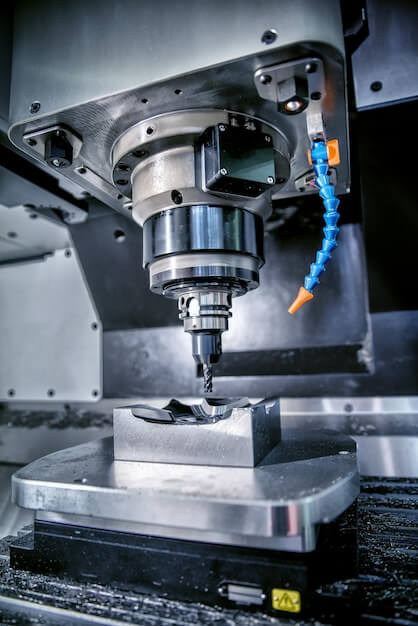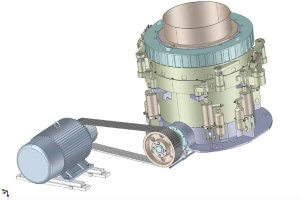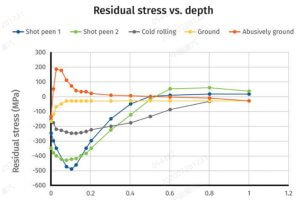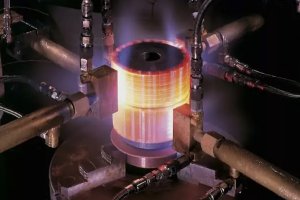CNC Machining and its Dependence on Material Selection
The use of Computer Numeric Control (CNC) machining is deeply rooted in today’s manufacturing industry due to its exceptional capacity for precision, automation, and the wide-collection of materials it can effectively manipulate. CNC machining machines a material block into specified dimensions by exercising programmed instructions without manual control. An essential aspect of this process lies in selecting an ideal substrate that suits the intended application. The right substrate ensures maximal efficacy of the final product, as the choice directly impacts crucial factors such as durability, weight, resistance abilities, cost efficiency etc. As an example, in creating parts meant for high-temperature environments like aerospace applications, temperature-resistant substrates like Inconel would be aptly beneficial.
Defining Material Consideration in CNC Machining
In the context of Computer Numerical Control (CNC) machining, material considerations refer specifically to the careful selection and matching of substrates compatible with machine processing needs. This aspect not only entails analyzing physical and mechanical property requirements but also optimizing factors such as machinability, cost-efficiency, longevity, and end-product quality. For example, using aluminum may be ideal for a part component which requires lightness yet good strength, while steel might facilitate needed durability in more high-load instances. Hence, making informed substrate choices plays an integral role in successful CNC operations, effectively determining overall project feasibility, sustainability, and profitability.
Factors Affecting Material Selection in CNC Machining
The choice of material in Computer Numerical Control (CNC) machining has a profound impact on the effectiveness and efficiency of the final product. Making an informed decision relies heavily on three main factors. Firstly, cost-effectiveness is pivotal – considering both initial outlay and ongoing costs related to the durability and lifespan of materials can dictate budget expenditure. For instance, stainless steel might entail higher upfront expenses but proves cost-effective with its increased longevity. Secondly, compatibility with the manufacturing process plays a significant role, particularly in terms of scalability and repeatability. Materials should be congruous with high-volume production runs while maintaining consistent output quality. An example would be aluminum, which lends itself well to scalability owing to its machinability speed and accuracy. Lastly, the exact requirements for the finished product such as strength, corrosion resistance, thermal properties must also be factored into selection. This includes reflecting on the operational conditions where it will serve, like ceramics bearing extreme temperatures or corrosive environments.
markdown
### Common Types of Materials Used in CNC Machining and When to Choose Them
Selecting the right material for CNC machining is pivotal for the success of your project. Different materials offer unique properties that can significantly affect the performance, durability, and appearance of the final product. Here, we explore some common materials used in CNC machining and provide guidance on when to choose each type.
#### Metals
– **Aluminum:** Known for its excellent machinability, strength-to-weight ratio, and corrosion resistance. Ideal for aerospace, automotive, and consumer electronics applications.
– **Steel:** Offers superior strength and durability. It’s the go-to choice for high-stress applications like construction and heavy machinery.
– **Titanium:** Combines high strength, low weight, and outstanding corrosion resistance. Perfect for medical implants and aerospace components.
#### Plastics
– **ABS:** A strong, impact-resistant plastic that’s easy to machine. Suitable for prototypes and end-use parts in automotive and consumer products.
– **Polycarbonate:** Known for its toughness and optical clarity. Use it for transparent applications or parts requiring high impact resistance.
– **PTFE (Teflon):** Exhibits excellent chemical resistance and a low friction coefficient. Ideal for parts in chemical processing industries.
#### Other Materials
– **Foam:** Lightweight and easy to shape. Used for modeling and prototyping, especially in the automotive and aerospace industries.
– **Wood:** Offers a natural aesthetic and is easy to machine. Commonly used for furniture, decor, and architectural models.
– **Composites:** Combine materials to achieve specific properties, such as enhanced strength or reduced weight. Used in automotive, aerospace, and sporting goods.
#### When to Choose Each Material
Choosing the right material depends on several factors, including the application’s specific requirements and the desired properties of the final product. For instance:
– **High-Temperature Environments:** Choose metals like aluminum or steel for their superior thermal conductivity and resistance to heat damage.
– **Electrical and Magnetic Considerations:** For applications requiring high electrical conductivity or non-magnetic properties, materials like copper, aluminum, and certain plastics are ideal.
– **Weight and Strength Requirements:** Titanium and composites are excellent choices for applications needing the best strength-to-weight ratio.
For those seeking expert guidance or specialized materials for their CNC machining projects, exploring a online CNC service can provide access to a wide range of materials and the expertise to select the perfect substrate for your specific application.
The Impact of Wrong Material Selection
There are substantial drawbacks to poor material selection in CNC machining, which can result in inaccurate parts, excessive waste, and increased costs. The precision of manufactured parts is heavily dependent on the choice of substrate material. If an inappropriate material is used, it could lead to inaccuracies during production or even failure of final products. Furthermore, incorrect material selection often results in increased amount of waste as a result of more frequent errors occurring throughout the manufacturing process – leading to not only resource waste but financial loss as well.
A practical industry example demonstrating these challenges was experienced by an automotive component manufacturer that incorrectly selected a soft aluminum alloy for their high-volume CNC milling operations. The chosen material’s insufficient rigidity led to significant flexing during operation, necessitating constant adjustments and rework. This resulted in a sharp rise in scrap rates, an increase in production time, ultimately escalating overall project costs. Therefore, proper material selection is essential in mitigating potential issues and ensuring optimal CNC machining performance.
Steps to Choose the Right Material in CNC Machining
Choosing the right substrate material is crucial for successful CNC machining. The first step entails taking into consideration the final use of the product or component, as different applications may demand various characteristics such as strength, flexibility, heat resistance or conductivity. Manufacturer guidelines can provide vital information about compatible materials that are best suitable for specified expectations. It’s critical not only to seek optimum quality but also balance it with cost-efficiency, aiming for a material that delivers high performance without unnecessarily inflating production costs. An example could be selecting aluminium over stainless steel if light-weight and lower cost components with satisfactory durability are required, while ensuring it aligns with manufacturer’s recommendations and project requirements.
Other Articles You Might Enjoy
- Precision CNC Machining of Steel: High-Volume Production
Precision CNC Machining and High-Volume Production As an integral part of modern manufacturing processes, Precision Computer Numerical Control (CNC) machining brings about unmatched accuracy and consistency in the production of…
- CNC Machining for Consumer Electronics: Material Selection for Heat Dissipation
Introduction to CNC Machining in Consumer Electronics CNC machining stands as a pivotal technology in the manufacturing of consumer electronics, offering precision and efficiency in producing components. This process involves…
- Material Versatility in CNC Machining: From Titanium to Thermoplastics
Introduction to CNC Machining CNC machining stands as a cornerstone in the manufacturing sector, enabling the precise creation of parts and components. This process utilizes computer numerical control (CNC) to…









